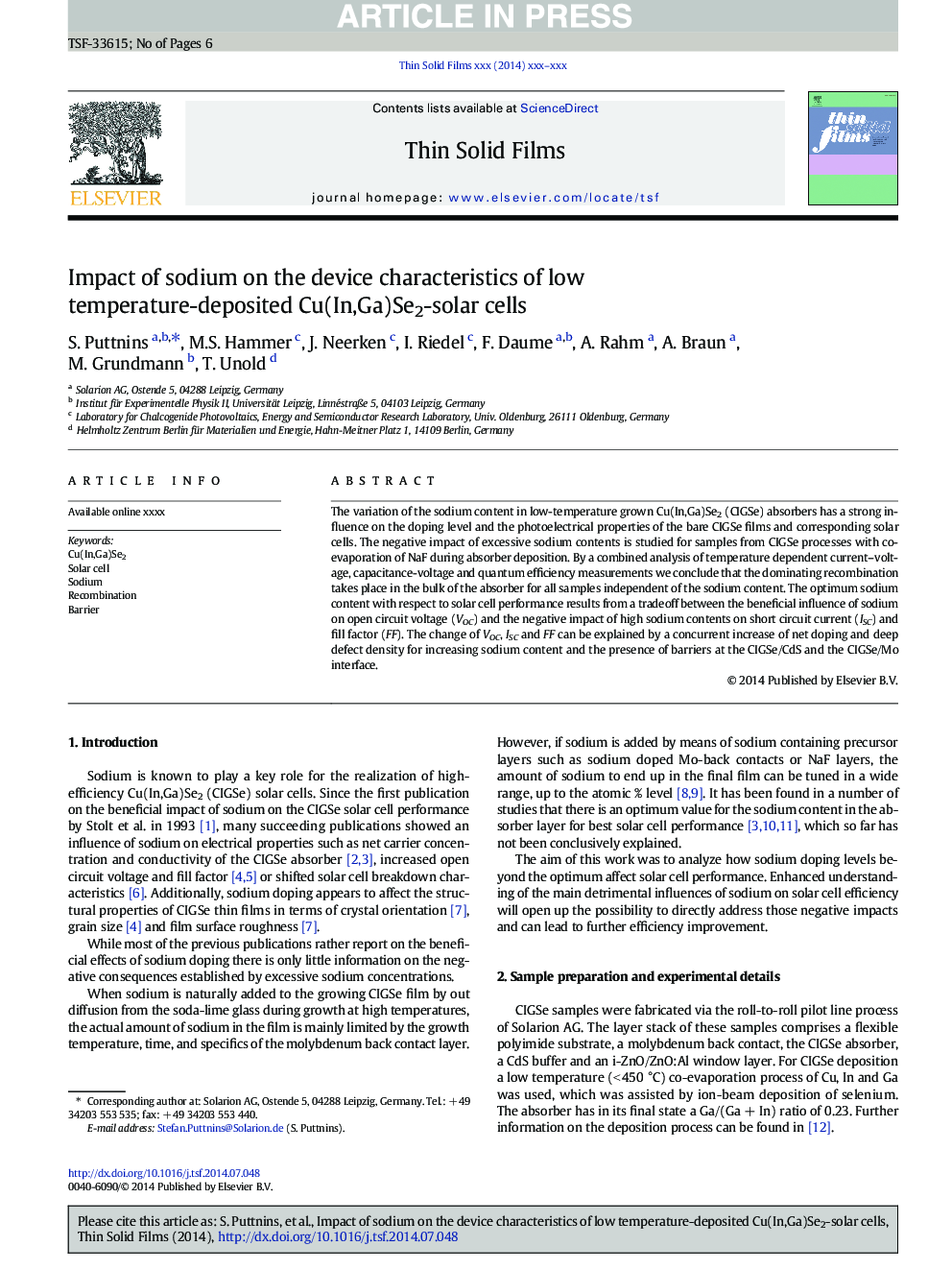| Article ID | Journal | Published Year | Pages | File Type |
|---|---|---|---|---|
| 8034215 | Thin Solid Films | 2015 | 6 Pages |
Abstract
The variation of the sodium content in low-temperature grown Cu(In,Ga)Se2 (CIGSe) absorbers has a strong influence on the doping level and the photoelectrical properties of the bare CIGSe films and corresponding solar cells. The negative impact of excessive sodium contents is studied for samples from CIGSe processes with co-evaporation of NaF during absorber deposition. By a combined analysis of temperature dependent current-voltage, capacitance-voltage and quantum efficiency measurements we conclude that the dominating recombination takes place in the bulk of the absorber for all samples independent of the sodium content. The optimum sodium content with respect to solar cell performance results from a tradeoff between the beneficial influence of sodium on open circuit voltage (VOC) and the negative impact of high sodium contents on short circuit current (ISC) and fill factor (FF). The change of VOC, ISC and FF can be explained by a concurrent increase of net doping and deep defect density for increasing sodium content and the presence of barriers at the CIGSe/CdS and the CIGSe/Mo interface.
Related Topics
Physical Sciences and Engineering
Materials Science
Nanotechnology
Authors
S. Puttnins, M.S. Hammer, J. Neerken, I. Riedel, F. Daume, A. Rahm, A. Braun, M. Grundmann, T. Unold,
